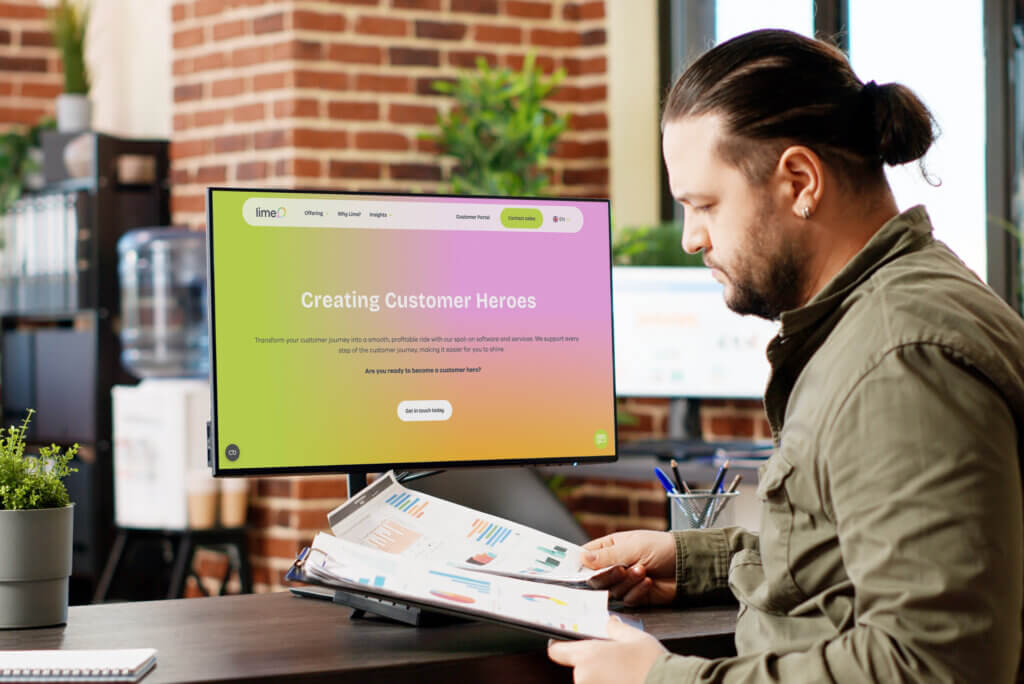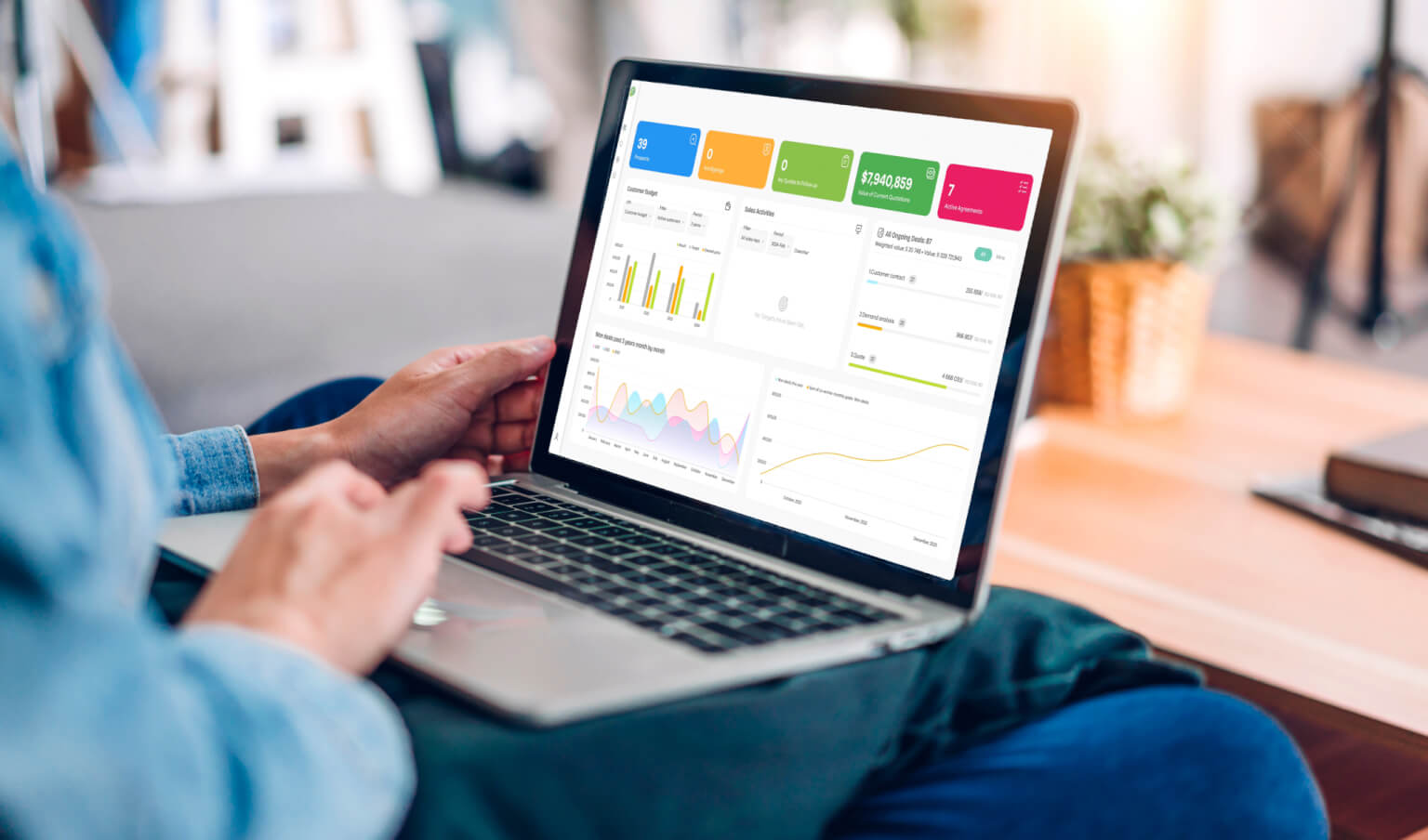Personalisation and relationship building in customer journeys

Share
Share
For B2B businesses, where transactions aren’t just about the exchange of goods and services, personalisation and building long-term relationships are both important parts of making a deal with a potential customer. But the best kind of personalisation goes beyond just addressing the customer by name in an e-mail. It often requires a deeper understanding of the customer’s needs, challenges, and goals, and requires having the ability to tailor your interactions and solutions to meet those specific needs.
In fact, as many as 63% of consumers agree that personalisation is now part of the standard service they expect. In other words, personalisation demonstrates to customers that they are valued and understood, which helps in creating a stronger connection and loyalty to your brand.
By using your data you’ll gather insights into your customers’ preferences, past purchases and their interactions, helping you create more customised and personal experiences as part of the customer journey. Segmenting your customers based on industry size, needs, or behaviors, makes it so you can tailor your marketing, sales and customer service efforts to better fit the customer, making it easier for you to show the value you bring to their business.
Three strategies for implementing personalised customer journeys
Implementing more personalisation in your customer journey requires a strategic approach and the right software. In fact, as many as 73% of consumers believe that brands are struggling to meet their expectations when it comes to their personalised experience.

Dynamic content and AI
Using dynamic content that can adapt itself based on the viewer’s characteristics and past interactions with your brand, is a great way to start personalising your customer experience. A classic example of this is a website that will showcase products the customer has previously visited, or dynamically altering the price with a discount for products that the customer never bought but would be a good fit for the customer.
This kind of dynamic content can help create a more user-friendly experience and increase vital KPIs such as engagement rates, conversions and return visits to the website. On top of this, aligning your content creation with your customer journey mapping helps you develop content that addresses your customers’ needs, guiding them smoothly from awareness to decision. You can also use AI tools to curate and recommend your content automatically to your users, based on their previous interactions with your business.
This kind of dynamic content has the potential benefits of increasing user engagement by providing the customer with the right kind of value, at the right time. It helps in building trust between you and the customer and helps position your brand as a thought leader in your industry.
Product recommendations
Analysing customer data with predictive analytics can help in predicting future buying behavior. Predictive analytics uses data, statistical algorithms, and machine learning techniques to identify the likelihood of future outcomes based on historical data. The goal is to go beyond knowing what has happened to provide a likelihood of what will happen in the future.
Based on this kind of analysis, you could recommend products or services that the customer is likely to need. Did you know that one out of every third customer feels frustrated when a company sends them an offer for something they just bought, something that isn’t relevant or doesn’t recognise that they’re already customers at the company? As an example, a customer who recently bought a desk has a higher likelihood of also needing a new office chair or other products that complement the desk, compared to someone who bought a shelf-unit.
Using customer purchase history and preferences helps identifying these kinds of opportunities and can help in creating an image of your brand as a true partner, instead of just a supplier, which helps to increase your customers satisfaction and driving additional revenue for your business.


Tailored communication
Segmenting your customers based on various criteria such as industry, company size, role in the buying process, or past purchasing behavior, are all part of tailoring your communication to your customers. For instance, a SaaS company specialising in project management software could use an e-mail marketing platform to automatically send out personalised e-mails. After segmenting their customer base, they could send targeted e-mails to small business owners offering tips on project management efficiency, while larger enterprises could receive content focused on integrating scalable new technologies instead. This kind of segmentation makes sure that the content is highly relevant and directly addresses the unique challenges faced by each segment.
Or they could use social media platforms’ advanced targeting capabilities to deliver more customised ads and content. On LinkedIn, their ads could be targeted towards project managers and IT leaders within specific industries, showcasing case studies and testimonials from similar sectors. Meanwhile, on Facebook, they could tailor ads based on user interests and behaviors, such as those who have visited their website but didn’t sign up for a trial account. This kind of strategic approach allows the company to re-engage potential customers with personalised messages about the software’s benefits, directly addressing any hesitations or questions they might have.
Using advanced personalisation strategies in your marketing and sales efforts could lead to a noticeable increase in customer engagement, loyalty, and revenue. Show your customers how you can help them, then layer the right amount of data on top to boost your message. By using data analytics, AI, and targeted communication tools, you can deliver highly personalised content, product recommendations, and messaging that resonate with the needs and preferences of each customer segment, transforming generic interactions into meaningful conversations that help drive growth for your business.
Tailoring your interactions helps build long-term relationships
Customer expectations are continually evolving and having the ability to personalise interactions across every touchpoint isn’t just advantageous but also critical in today’s business landscape. The strategies outlined above are just the beginning of what’s possible when it comes to personalised customer interactions.
As we look towards the future, the integration of emerging technologies such as AI and machine learning with increasingly sophisticated data analytics, will further revolutionise our ability to understand and meet our customers’ needs in real-time. The potential to not just respond to but rather anticipate customer needs will set the stage for unprecedented levels of engagement and satisfaction.
As you continue to refine your approach, remember that the goal is not just to sell a solution or product, but to build a partnership that grows in value over time.
The future belongs to those who recognise and act on the power of personalised engagement, turning every customer interaction into an opportunity to impress, delight, and forge a stronger relationship.
Related articles
-
Read more: CRM in the utility industry: 4 ways to create a more efficient customer journey

CRM in the utility industry: 4 ways to create a more efficient customer journey
How can a CRM system help future-proof utility companies?
-
Read more: Continuous feedback: the key to a great membership experience

Continuous feedback: the key to a great membership experience
Understanding your members’ needs and experiences is an important part of a company’s ongoing success.
-
Read more: 6 reasons to switch to an online CRM

6 reasons to switch to an online CRM
Remember when CRM systems had to be installed locally, required IT assistance, and only worked from the office? Back then,…
Do you want more personalised customer journeys?
There’s no time to wait! Contact us and find out what we can do to improve your customer journey!